With the same-time release of Nokia Lumia
720 and Lumia 520, the Windows Phone 8 model race of Nokia was complete. All
the WP8 phones we reviewed basically sit on 2 decks based on the general core
technical specs. That put forth a question: why releasing 2 new models when
both shared SoC, RAM capacity and the same screen res as prestigious Lumia 620 and
HTC 8S? Obviously, there’re differences in design, camera, screen tech and all
the other things giving birth to 720, but was it worth a significant increment
compared to 620, double the price of 520 or Huawei Ascend W1? Let’s find out
what Lumia 720 offers.
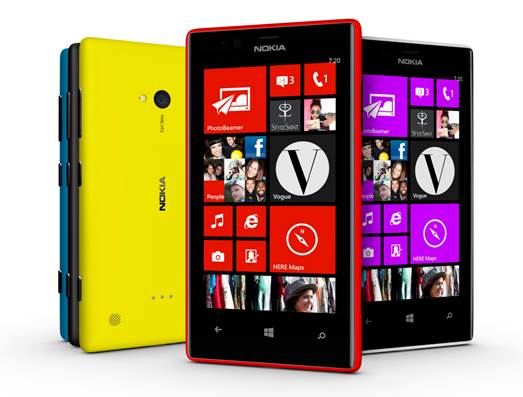
Obviously,
there’re differences in design, camera, screen tech and all the other things
giving birth to 720
Hardware
We pretty flavor of the design philosophy Nokia
have been bringing to the Windows Phone 8 lens till now, and 720 proves that
the company has sophisticated eyes. Being a neat, plain phone rectangle, the
phone has the size of 127.9x67.5x9mm (5.04x2.65x0.35 inches), turning it into
one of the thinnest WP8 phones. It shares the obvious features with 8X of HTC and
Ascend W1 of Huawei, which have the same sharp angles offering a feeling like a
visible expression of Live Tile UI of Microsoft. While the straight hard lines
gave 720 a little bit of sophistication, Nokia didn’t forget to add the
protective edges to hat interesting Lumia. The round edges of the device which
protrude a little bit from the only sculptured Gorilla Glass cover the entire front,
before narrowing inwards to the flat back. The corners, sides and back are all
one piece of polycarbonate, which in our case has red color. Well, mostly red –
it has nice 2-tone effect (though more sophisticated than “dual-shot color” cover
of 620) which makes it sparkle with orange hue when being bright illuminated.
There’re also other models having the familiar colors of Lumia such as cyan,
yellow, white and black, but in Britain, the currently exclusive 720 model of
the O2 network is in red (though our tested model which is unlocked comes from Nokia).
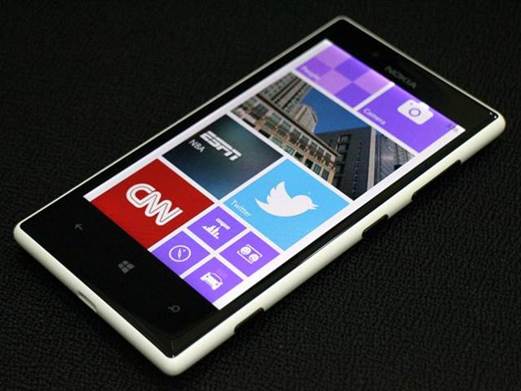
The
corners, sides and back are all one piece of polycarbonate
These round edges play a role as a buffer
for the pretty sharp aesthetic principle in common, and along the back, create
a really comfortable grip. The polycarbonate cover helps to anchor it tightly
in the palm, and with 128g (4.5 ounces), it’s pretty lightweight for a phone having
such solid feeling. It may not made from metal, but build quality is strong and
gives 720 a feeling of luxury. In term of size, 720 is not equal to Galaxy S
III of Samsung, regardless of having a half inch less of screen in the
diagonal. That is to say, 720 doesn’t seem like or feel like the hardware
protrudes around a small screen – there’s not much bezel on the left or on the
right of the screen and all the other spaces are divided proportionately. Your
thumb will have no problem arriving to the place it needs to go.
Now, prepare yourself for a tour. Intruding
the 4.3 inch screen under the Gorilla Glass 2 that occupies the 720 surface are
standard capacitive back, home and search keys. On the screen, you will find a
small grey Nokia logo under earpiece, with 1.3MP front camera sitting on the
left. The bottom edge is the place for the micro-USB port and mic, while the
right side has nothing but the microSD tray at the end of earpiece. On the top
edge are the 3.5mm headphone socket and another tray for micro-SIM, with volume
rocker, power button and camera two-stage button in the standard layout of Nokia
which sits on the right.
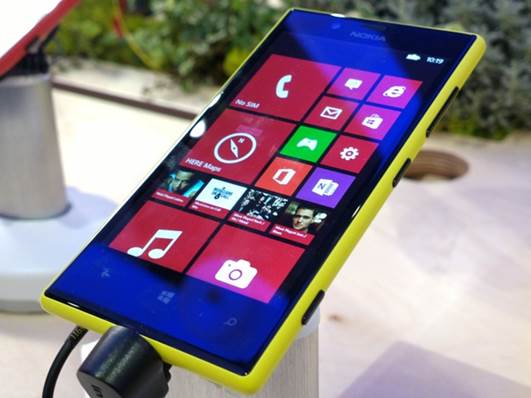
On
the screen, you will find a small grey Nokia logo under earpiece, with 1.3MP
front camera sitting on the left.
The back panel is neat and discreet like
the remains of the device. On the top is the main 6.7MP camera with a small flash
inclined to the left and the small black Carl Zeiss logo which sits underneath
it. Sitting at the center is the black Nokia logo which is embossed lengthwise
onto the body, and on the bottom right corner is a sophisticated rounded-square
speaker grille. On the bottom is 3 rounded piece of metal which when combined
with an optional cover, giving 720 the ability of Qi wireless charging with non-detachable
2,000mAh battery. Committing by halves with wireless charging and requiring the
additional hardware to take full use of it are curious design decision, and
feels like an unnecessary inclusion.
Sitting on the bottom right of the panel is
a glossy CE brand (European certificate) with “Model: 720 Made in China” in
unreadable small font below. Unfortunately, it seems like a complete mess on a
pretty neat phone. Go on with the fault finding. microSD and micro-SIM trays which
is loaded with the spring sink into the body a little (which means that they’re
not on par with the edges) and we can create mild vibration from the case on
our model. While in general the phone is very solid, the middle part of the
panel slightly depress when being pressurized, creating a soft cracking sound –
this is just an observation, so we have nothing to worry about. Highlighting
such small problem will gives you the suggestions about what we think about the
hardware design as a whole. We like it… a lot.
Screen
Let’s take a look at the technical specs
first: 4.3-inch IPS LCD screen with ClearBlack and Sensitive Touch tech,
800x480 resolution, 217ppi. What the leading phone makers with HD screen don’t
want you to know is that WVGA is still a pretty popular res, especially for the
Windows Phone 8 devices. In fact, 520, 620, 720, 820, 8S and Ascend W1 are all
have 800x480 screen between the size from 3.8 to 4.3 inches. We can infer that
the WVGA screens, and the resources they need, create cheaper smartphones, or
the minimum Live Tile-based WP8 and UI screen which have an excellent
performance at this res.
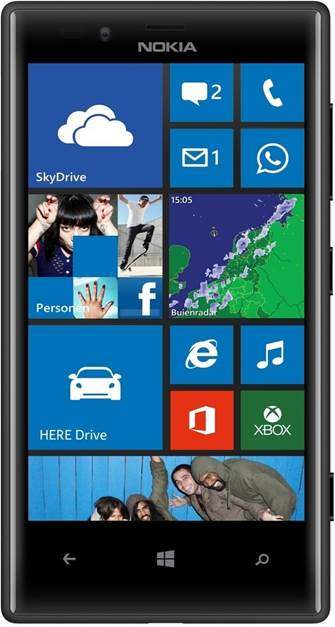
Let’s
take a look at the technical specs first: 4.3-inch IPS LCD screen with
ClearBlack and Sensitive Touch tech, 800x480 resolution, 217ppi.
Pixel break in the apps and menus is
actually not the problem. It presents at some certain level if you have a close
look, but WP8 UI helps to hide it. We’re surprised because there’s no
remarkably quality reduction when comparing to the screen of Lumia 620, which
stuffs WVGA res onto the smaller 3.8inch screen (246ppi). Colors are rich and
vibrant; the white hue is accurate, and the black hue is the best we’ve ever
seen, supported ClearBlack tech of Nokia. The black of the screen normally
can’t be told apart from the dark color of the bezel, making the entire front
seem like it’s supporting the Live Tile grid. Viewing angle, outdoor clarity,
brightness (and auto-adjust settings) are all magnificent. Colors wow us, but
we can’t completely ignore the res. Though from the internal files, YouTube or
Netflix, it’s a totally suitable screen for watching moving pics, (speakerphone
is pretty powerful), but you know you’re missing the nice details. It will also
be a case for games, but for the graphics-intense games which don’t have the
compatibility to the phones having 512MB RAM.
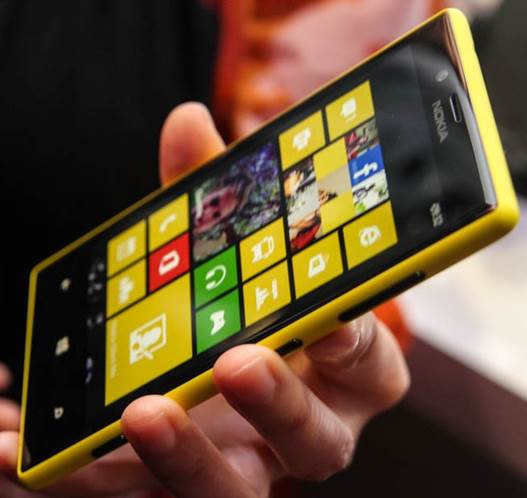
Viewing
angle, outdoor clarity, brightness (and auto-adjust settings) are all
magnificent